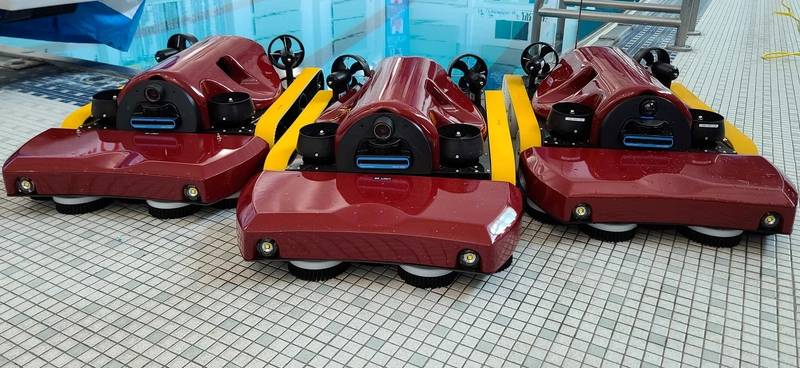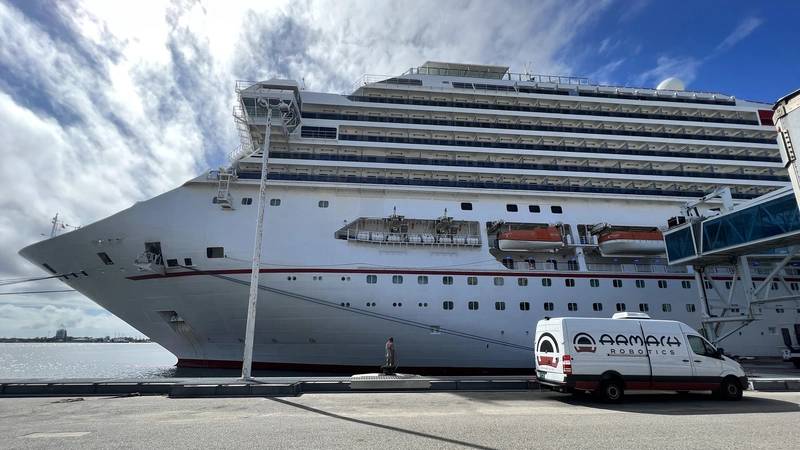Armach’s Robot Hull Cleaning Service Takes Next Steps Toward Commercialization
Maritime Reporter & Engineering News recently caught up with Karl Lander, Director of Regulatory Compliance and Outreach at maritime tech startup Armach Robotics, to hear the latest progress on its unique, small platform, intelligence-driven hull cleaning solution.
Companies like Plymouth, MA, headquartered Armach Robotics (Armach) are justifiably convinced that cleaning hulls is set for wider adoption in the coming years, as the principle of coating hulls with substances designed to be noxious to marine life becomes increasingly problematic. Not only is there the concern that these noxious substances are indiscriminate in the species they can harm, and so are not only poisonous to the critters that choose to adhere to ships’ hulls, but there is also the concern, which has grown alongside better ship performance monitoring, that fleets are plying their trade with dirtier hulls more of the time than previously thought. This operation of vessels with partially fouled hulls, presents the dual environmental and operator cost risks of increased fuel burn, and the greater likelihood of invasive species transfer.
Karl Lander explains: “Hull cleaning systems are not going to replace biocidal hull coatings overnight. There will still be a need to paint hulls under the waterline in something that is unappealing to marine life. The difference is that now we will be able to augment these coatings with hull cleaning processes, so we can use harder, longer-lasting coatings which leach fewer toxins, are kinder on the environment, while offering the additional cost benefit of fewer ship lay-ups for recoating.”
 Image courtesy Armach Robotics
Image courtesy Armach Robotics
There is a critical aspect to when, in the fouling cycle, vessel operators choose to conduct mechanical hull cleanings. Broadly speaking, until now there were two ways of looking at it; proactive or reactive. Armach however offers an always clean approach through their new EverClean program which only tackles slime, the first step in the fouling chain, addressing only slime early and often with gentle soft brushes optimised for that task, and hence kinder on hull coatings than alternatives. This principle informs a big part of the EverClean always clean philosophy.
The weeds, and later even more problematic fouling species such as molluscs, simply cannot attach, unless slime is already present. Yet, as any small boat owner who owns a mask, flippers, and a scrubbing brush will tell you, slime can be removed with one finger if caught early enough, but if left to the weed stage or beyond, removal becomes a real slog.
Armach is currently working on a Launch and Recovery System (LARS) for completely autonomous deployment in the future. This next step in the technology evolution will take even more people out of the loop, and make the systems even more autonomous. This autonomy is the key difference in what sets Armach’s system apart, by harnessing the powers of autonomy and sensor control, to offer always clean hulls at scale commercially.
Armach has already successfully demonstrated over-the-horizon operation when an Armach Hull Service Robot (HSR), deployed in the water in Norfolk, VA, was monitored and controlled by staff at a command center in Plymouth, MA, using standoff command and control solution SAFE C2 from Greensea Systems who has enormous experience, and an enviable worldwide reputation for providing the very best intelligent control systems for underwater robots, indeed, this is how Armach came into being. Greensea was confident that its OPENSEA vehicle agnostic, open architecture control software would fuse their proprietary hull navigation solution from the HSR’s myriad sensors, providing rock-solid vehicle control.
The Armach HSR is undoubtedly a clever machine. It uses six thrusters and a central vortex generator to obtain its variable pressure on the hull to optimize performance from its five brushes. This has a number of benefits over rival systems, not least that its non-reliance on magnets means it’s equally usable on steel, GRP, or aluminium hulls. HSRs measure brush power demands on the fly, using it along with an array of other data, so that the vehicle ‘knows’ when it is cleaning an already relatively clean area, so it can move faster, with less pressure. When the HSR reaches a more heavily fouled area, it exerts more pressure, and takes a little more time, just like an intelligent human operator would. This agility and scalability is a clear benefit for the Armach EverClean approach.
 Image courtesy Armach Robotics
Image courtesy Armach Robotics
Karl Lander was happy to share some valuable findings from early adopters of the program. “One very forward-thinking company, when it comes to decarbonization and ESG aspects, was running partially fouled hulls leading up to their scheduled dry dockings. This isn’t a big revelation, as it is widely accepted in the shipping industry as an undesirable, but largely unavoidable, cost of operation. For this operator, however, performance monitoring had put a number on this, and as many operators are finding out, the actual number is much larger than the past estimates ever were. Cruise ship turnarounds are famously tight. Thanks to the HSR’s intelligent navigation, the robot ‘knows’ the fastest way around each hull, and tweaks its route intelligently, according to what it encountered last visit, meaning tight deadlines are achievable with just 2 HSRs working as a team.”
However, Armach is not just about hardware, as Karl Lander sums up: “In terms of the HSR itself, the hardware is fairly straightforward. The success is the combination of hardware with proprietary software. Armach is the culmination of years’ of navigation, autonomy, and communication software development merged with hardware to create a service that meets the future needs of vessel owners now.”




















